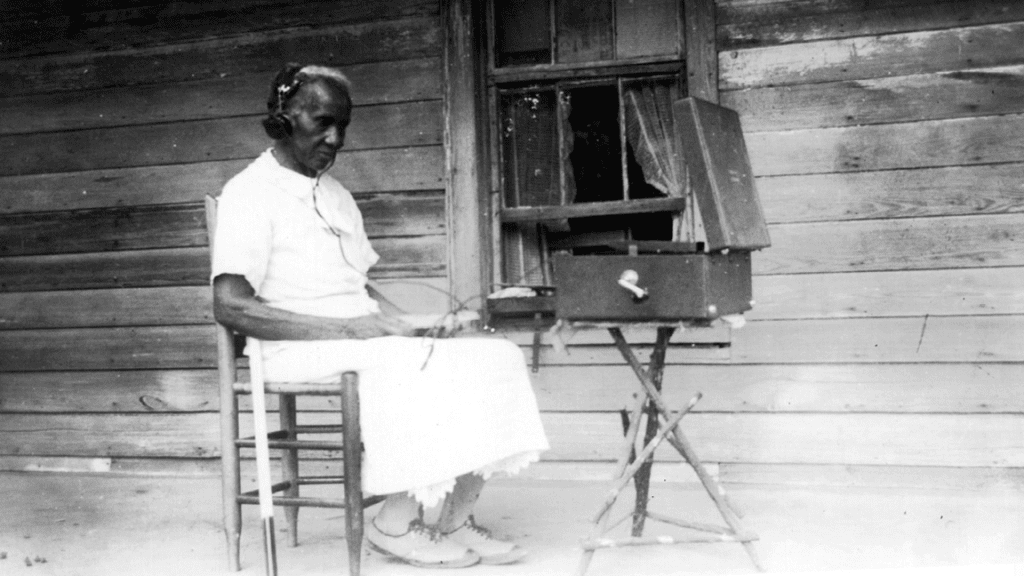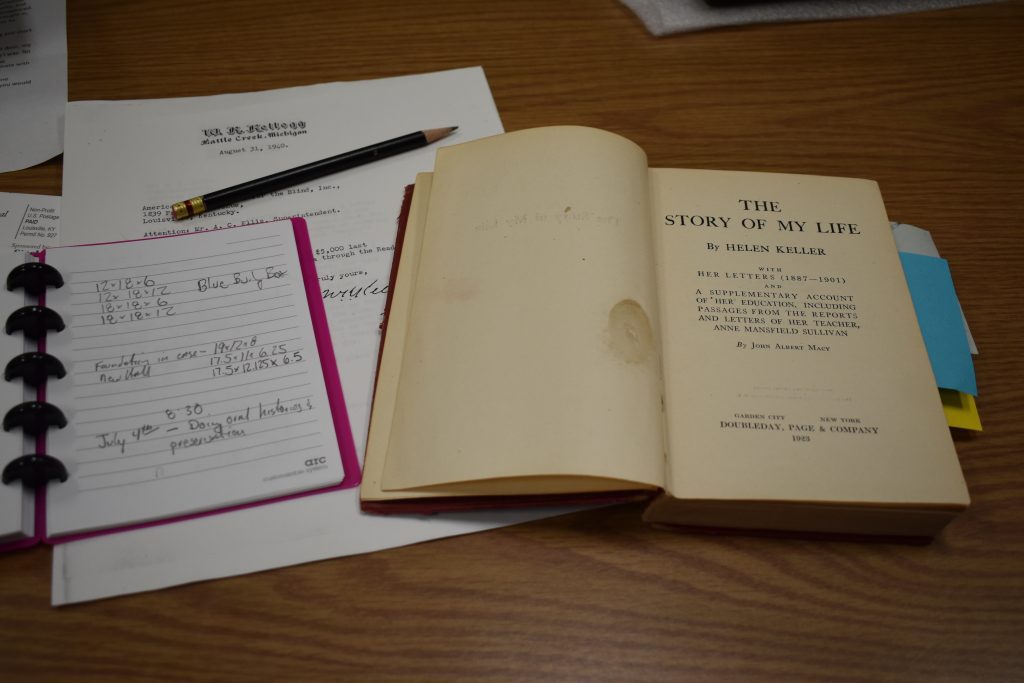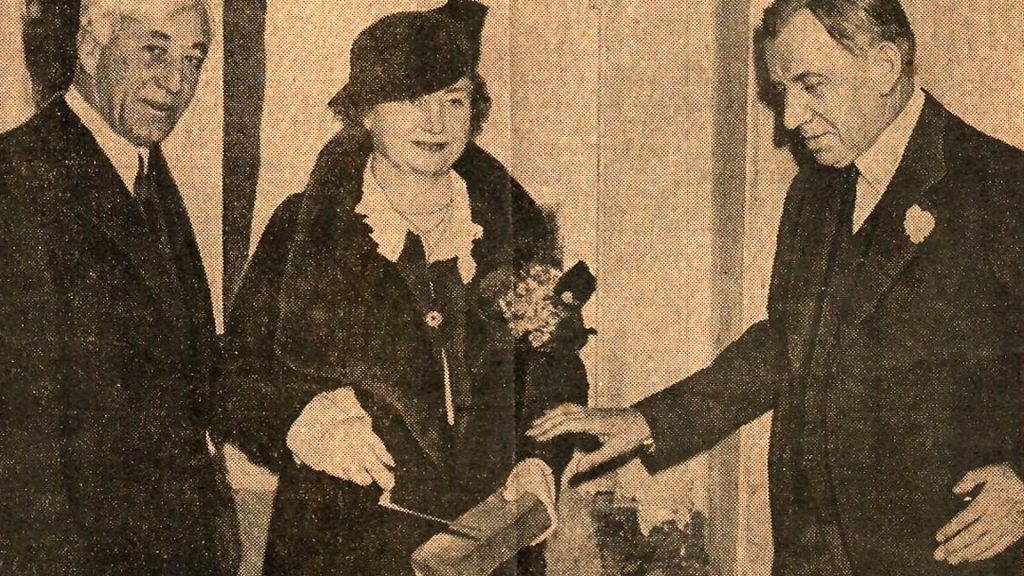Please be advised USPS is experiencing unusually long delays for Free Matter For The Blind shipping. If you have not received an order placed more than 30 days prior, please contact the APH Customer Service team at support@aph.org or 1-800-223-1839.
CloseBlindness History Basics: Helen Keller Archival Collection

One of the most fascinating treasures at The Dot Experience is the American Foundation for the Blind (AFB) Helen Keller Archival Collection. The single largest holding of Keller related letters, speeches, press clippings, scrapbooks, photographs, architectural drawings, artifacts, and audiovisual materials in the world, the existence of the collection is no coincidence. Keller was an astute, sophisticated woman who had an amazingly rare trait─an accurate understanding of her own significance in history. Keller intended to keep her items and objects together, hoping they would continue her advocacy and help AFB after she was gone.
2024 marks the 100th anniversary of the most significant work of Keller’s life, advocacy for people who are blind on behalf of AFB. As we celebrate Helen Keller’s birth this June, we also applaud her for helping keep the information that tells her story together. Today, an innovative partnership between The American Printing House for the Blind (APH) and AFB ensures the collection will be cared for and conserved in perpetuity.
Many of the papers and artifacts that make up the Archive were created and collected during the 44 years Keller worked with AFB. Keller began traveling the United States as an advocate for people who are blind or low vision on behalf of AFB in 1924. Her work helped encourage states to create commissions, offer better educational access, better rehabilitation facilities, and eventually, Keller’s advocacy helped secure legislative initiatives on behalf of those with blindness or low vision.
After World War II, Keller became the first Goodwill Ambassador to Japan, where she saw the devastation of Hiroshima firsthand just three years after the bombing. Between 1946 and 1957 she took seven trips outside of the United States, visiting 35 countries on five continents. In every nation, crowds of people greeted Keller warmly and gave her gifts she treasured and collected. Putting some of her treasures in the AFB offices, Keller also kept many of her papers and reference materials at AFB. When she died in 1968, the organization inherited her estate, including the records and artifacts that now comprise the Archive.
The first AFB Helen Keller archivist, Marguerite Levine, completed the organization of the AFB Helen Keller Archival Collection in 1970, making it available to researchers for the first time. AFB archivists that followed continued her tradition of excellence and furthered Keller’s demand for access.
In 2015, AFB announced the Helen Keller Archival Collection Digitization Project, an endeavor that ensured the Archival holdings were made fully accessible, through the internet, to people who are both sighted and non-sighted─certainly a project that would delight Keller. Five years later, an exciting new collaboration between AFB and APH brought the Archive to Louisville, Kentucky. Today, APH Helen Keller Archivist, Justin Gardner, cares for and guides the collection.
The information and objects in the Archive have been invaluable in helping inform the design and interpretation of The Dot Experience. A 1954 photograph shows Keller working at a braille machine on her desk covered by artifacts now held in the Archive. Visitors to The Dot Experience will be able to see Keller’s desk and other objects in the Archive with eyes and fingers─an experience virtually unheard of during her lifetime and one she would certainly applaud. We can’t wait to welcome you to The Dot Experience!
Share this article.
Related articles

Finding Sadie
“The blind veterans here in the Helen Keller class are able, thru talking books, to obliterate the tedious hospital hours...

Thinking on Tasks Left Unattended
They say the best advice to young writers is to write about what you know. So rather than come up...

The Storied Life of a Time Capsule
Time capsules have long been an intriguing way for people to communicate through the ages, be they historians or grade...
